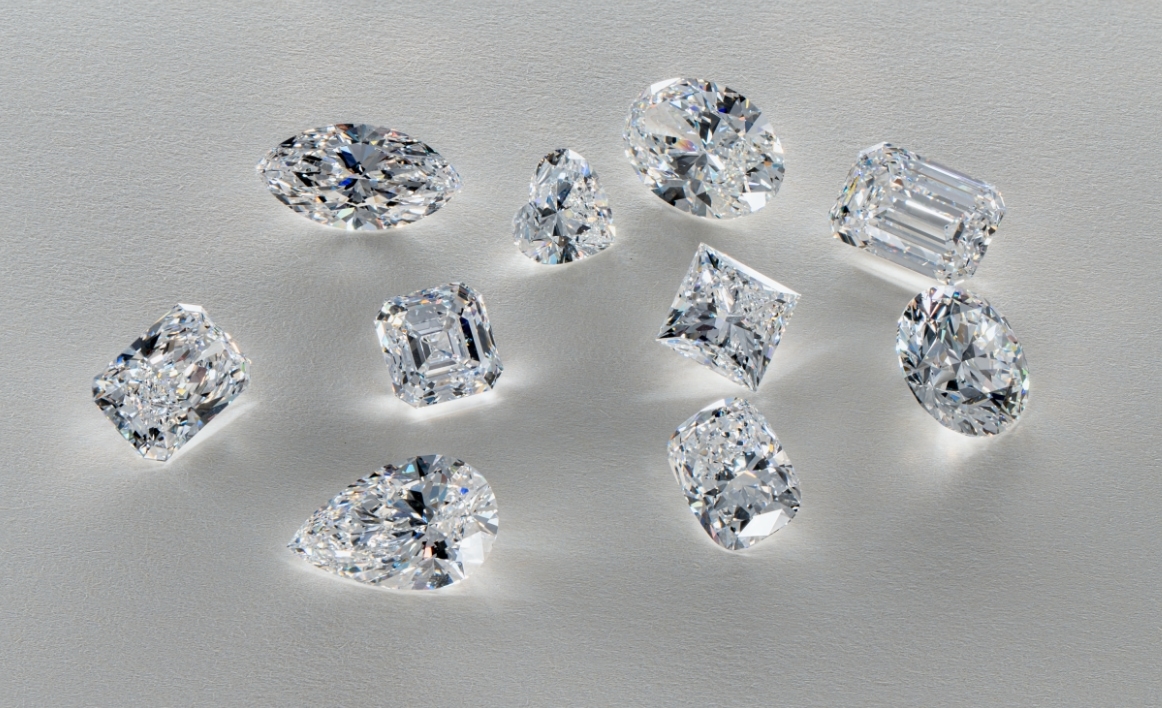The Jewel Revolution: Why Lab-Grown Diamonds Are Making Waves
In recent years, the debate over man made diamonds versus natural diamonds has intensified. As technology advances, lab-grown diamonds have become virtually indistinguishable from their mined counterparts. This article delves into the various aspects of lab-grown diamonds, analyzing whether they truly surpass natural diamonds in quality, sustainability, and value.
Understanding Lab-Grown Diamonds
Lab-grown diamonds, also known as synthetic or man-made diamonds, are produced in a controlled laboratory environment using high-pressure, high-temperature (HPHT) or chemical vapor deposition (CVD) methods. These diamonds are chemically, physically, and optically identical to natural diamonds, as they are composed of the same carbon atoms arranged in a crystal lattice.
The Production Process
The production of lab-grown diamonds begins with a tiny diamond seed, which is placed in a chamber and exposed to extreme heat and pressure. Carbon atoms attach to the seed, gradually forming a diamond crystal. The HPHT method mimics the natural geological conditions that create diamonds, while the CVD method involves carbon-rich gas breaking down and depositing carbon atoms on the diamond seed.
Quality and Characteristics
One of the most compelling arguments for lab-grown diamonds is their exceptional quality. Lab-grown diamonds can achieve the same clarity, cut, color, and carat weight as the finest natural diamonds. Advanced technology allows for precise control over the growth process, often resulting in fewer inclusions and blemishes.
Clarity and Color
Lab-grown diamonds frequently exhibit higher clarity grades due to the controlled environment in which they are created. This process reduces the likelihood of natural imperfections. Additionally, lab-grown diamonds can be engineered to possess ideal color grades, ranging from colorless (D grade) to near-colorless (G grade).
Cut and Carat
In recent years, the debate over lab-grown diamonds versus natural diamonds has intensified. As technology advances, lab-grown diamonds have become virtually indistinguishable from their mined counterparts. This article delves into the various aspects of lab-grown diamonds, analyzing whether they truly surpass natural diamonds in quality, sustainability, and value.
Understanding Lab-Grown Diamonds
Lab-grown diamonds, also known as synthetic or man-made diamonds, are produced in a controlled laboratory environment using high-pressure, high-temperature (HPHT) or chemical vapor deposition (CVD) methods. These diamonds are chemically, physically, and optically identical to natural diamonds, as they are composed of the same carbon atoms arranged in a crystal lattice.
The Production Process
The production of lab-grown diamonds begins with a tiny diamond seed, which is placed in a chamber and exposed to extreme heat and pressure. Carbon atoms attach to the seed, gradually forming a diamond crystal. The HPHT method mimics the natural geological conditions that create diamonds, while the CVD method involves carbon-rich gas breaking down and depositing carbon atoms on the diamond seed.
Quality and Characteristics
One of the most compelling arguments for lab-grown diamonds is their exceptional quality. Lab-grown diamonds can achieve the same clarity, cut, color, and carat weight as the finest natural diamonds. Advanced technology allows for precise control over the growth process, often resulting in fewer inclusions and blemishes.
Clarity and Color
Lab-grown diamonds frequently exhibit higher clarity grades due to the controlled environment in which they are created. This process reduces the likelihood of natural imperfections. Additionally, lab-grown diamonds can be engineered to possess ideal color grades, ranging from colorless (D grade) to near-colorless (G grade).
Cut and Carat
The cut of a diamond significantly influences its brilliance and sparkle. Lab-grown diamonds are meticulously cut to maximize their optical performance. Carat weight, which measures a diamond’s size, is equally important. Lab-grown diamonds can be produced in large sizes more consistently than natural diamonds, making them a popular choice for those seeking substantial stones.
Sustainability and Ethical Considerations
Lab-grown diamonds offer a more sustainable and ethical alternative to natural diamonds. The traditional diamond mining industry has long been associated with environmental degradation and human rights abuses.
Environmental Impact
The environmental footprint of lab-grown diamonds is significantly smaller. Diamond mining involves extensive land excavation, deforestation, and water pollution. In contrast, lab-grown diamonds require less land and water and produce fewer carbon emissions. Some producers are also using renewable energy sources to power their facilities, further reducing their environmental impact.
Ethical Sourcing
Ethical concerns surrounding natural diamonds include child labor, unsafe working conditions, and funding of armed conflicts (often referred to as “blood diamonds”). Lab-grown diamonds eliminate these issues, as they are produced in a controlled, transparent environment with traceable origins. Consumers can be assured that their purchase does not contribute to unethical practices.
Economic Value and Affordability
While lab-grown diamonds are often more affordable than natural diamonds, their value proposition extends beyond price.
Cost Comparison
On average, lab-grown diamonds cost 30-40% less than natural diamonds of equivalent quality. This price difference allows consumers to purchase larger or higher-quality stones without exceeding their budget.
Resale Value
The resale value of lab-grown diamonds has been a topic of debate. While natural diamonds have traditionally held their value over time, the resale market for lab-grown diamonds is still evolving. However, the growing acceptance and demand for lab-grown diamonds suggest that their resale value may improve in the future.
Technological Advancements and Market Trends
The diamond industry is witnessing a significant shift as technological advancements enhance the production and quality of lab-grown diamonds.
Innovation in Production Techniques
Continuous innovation in production techniques has led to increased efficiency and reduced costs. As technology advances, the production of high-quality lab-grown diamonds becomes more accessible and affordable, further driving market growth.
Consumer Preferences
Consumer preferences are also evolving. Modern buyers, particularly younger generations, prioritize sustainability and ethical considerations when making purchases. The transparency and traceability of are lab grown diamonds better align with these values, contributing to their rising popularity.
Conclusion: Are Lab-Grown Diamonds Better?
In conclusion, lab-grown diamonds present a compelling case for being a superior choice over natural diamonds. Their exceptional quality, ethical production, and environmental sustainability offer significant advantages. While the resale market for lab-grown diamonds is still maturing, their affordability and the growing consumer preference for ethically sourced products make them an attractive option.
Sustainability and Ethical Considerations
Lab-grown diamonds offer a more sustainable and ethical alternative to natural diamonds. The traditional diamond mining industry has long been associated with environmental degradation and human rights abuses.
Environmental Impact
The environmental footprint of lab-grown diamonds is significantly smaller. Diamond mining involves extensive land excavation, deforestation, and water pollution. In contrast, lab-grown diamonds require less land and water and produce fewer carbon emissions. Some producers are also using renewable energy sources to power their facilities, further reducing their environmental impact.
Ethical Sourcing
Ethical concerns surrounding natural diamonds include child labor, unsafe working conditions, and funding of armed conflicts (often referred to as “blood diamonds”). Lab-grown diamonds eliminate these issues, as they are produced in a controlled, transparent environment with traceable origins. Consumers can be assured that their purchase does not contribute to unethical practices.
Economic Value and Affordability
While lab-grown diamonds are often more affordable than natural diamonds, their value proposition extends beyond price.
Cost Comparison
On average, lab-grown diamonds cost 30-40% less than natural diamonds of equivalent quality. This price difference allows consumers to purchase larger or higher-quality stones without exceeding their budget.
Resale Value
The resale value of lab-grown diamonds has been a topic of debate. While natural diamonds have traditionally held their value over time, the resale market for lab-grown diamonds is still evolving. However, the growing acceptance and demand for lab-grown diamonds suggest that their resale value may improve in the future.
Technological Advancements and Market Trends
The diamond industry is witnessing a significant shift as technological advancements enhance the production and quality of lab-grown diamonds.
Innovation in Production Techniques
Continuous innovation in production techniques has led to increased efficiency and reduced costs. As technology advances, the production of high-quality lab-grown diamonds becomes more accessible and affordable, further driving market growth.
Consumer Preferences
Consumer preferences are also evolving. Modern buyers, particularly younger generations, prioritize sustainability and ethical considerations when making purchases. The transparency and traceability of lab-grown diamonds align with these values, contributing to their rising popularity.
Conclusion: Are Lab-Grown Diamonds Better?
In conclusion, lab-grown diamonds present a compelling case for being a superior choice over natural diamonds. Their exceptional quality, ethical production, and environmental sustainability offer significant advantages. While the resale market for lab-grown diamonds is still maturing, their affordability and the growing consumer preference for ethically sourced products make them an attractive option.



:max_bytes(150000):strip_icc()/Web_1500-bri-lab-grown-diamonds-test-12fifteen-12f1-jthompson-0636-29ab9d8b5b304e89aade785fc47135a7.jpg)